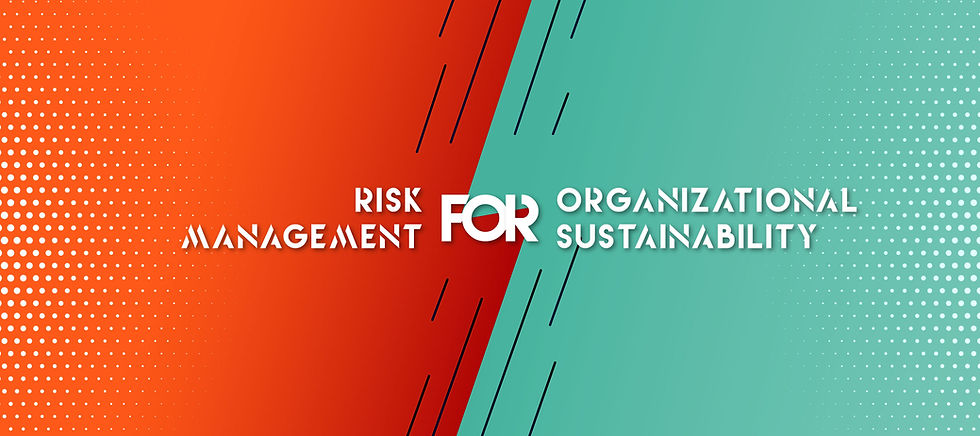Enterprise Risk Management and Organizational Sustainability
- VCARE Academy

- May 25, 2021
- 2 min read
Updated: Nov 9, 2022

According to COSO (https://www.coso.org) integrating enterprise risk management practices throughout an organization improves decision-making in governance, strategy, objective-setting, and day-to-day operations. It guides an organization to link strategy and business objectives to risk. By implementing this method, an organization can develop the means to provide the organization with a clear path to creating, preserving, and realizing sustained value. Every organization exists to provide value to its stakeholders. COSO has provided a basic conceptual structure of ideas to help find management a choice on how it can apply ERM to its organization.
Enterprise Risk Management Affects Value
Value is created when the benefits of the resources used exceed the cost of those resources.
Value is preserved when the value of resources deployed in everyday operations sustain the benefits created.
Value is diminished when management implement a strategy that does not yield expected outcomes or fails to execute the everyday tasks.
Value is realized when stakeholders derive benefits created by the organization. Regardless of the type of organization, integrating ERM practices with other aspects of the business enhances trust and creates greater confidence with the stakeholders.
Mission, Vision, and Core Values
Mission, vision, and core values define what an organization strives to be and how it wants to conduct business.
The mission statement is widely regarded as an explicit statement of the reason for the organization’s existence and what it is meant to accomplish. It usually focused on a 5- to 10-year time frame.
An organization’s vision expresses its aspirations for its future state or what the organization aims to achieved over time.
The organization’s core values express its beliefs and ideals about what it good or bad, acceptable, or unacceptable, which influence the behavior of the organization.
Enterprise Risk Management Affects Strategy
Strategy refers to an organization’s plan to achieve its mission and vision, and to apply its core values. A well-defined strategy drives efficient allocation of resources and effective decision-making. It also creates a road map for establishing business objectives throughout the organization. Organizational sustainability does not create the entity’s strategy, but it influences its development . An organization that integrates enterprise risk management practices into setting strategy provides the top leader and the management with the risk information its needs to consider alternative strategies as it works to adopt its chosen strategy. Organizational sustainability needs to be included in the strategy development. It should not be defined by a sustainability manager.
Dr. Bob Pojasek
Sustainability Legend | ESG Reporting & Disclosures | Uncertainty Risk | Pollution Prevention Expert | Process Improvement | Organizational Sustainability Reporting | Sustainable Procurement Professor
Chairman, Education and Research Executive Board (EREB)
VCARE Academy Inc.
Managing Director
Center for Corporate Performance & Sustainability
📩 rpojasek@sprynet.com

A successful career in supply chain necessitates a never-ending thirst for knowledge and the most up-to-date supply chain skills and knowledge. Even though continuing education and certification programs can take time and money, they help get your specialized knowledge or skills recognized.
When professionals have training that other professionals lack, it distinguishes them and sets them apart from the crowd. Certification and master classes show that the professionals are committed to learning, excelling, and using best practices.

Featured Certification Programs
Certified Stores and Stock Controller (CSSC)
Certified Production and Inventory Analyst (CPIA)
Featured Mini-Master Classes
Supply Chain Framework and Strategy
Collaboration among Sustainability, Procurement and Supply Chain
Implementing 3PL and 4PL Strategies in the Value Chain
Supply Chain Sustainability with Circularity to Drive Profitability



Comments